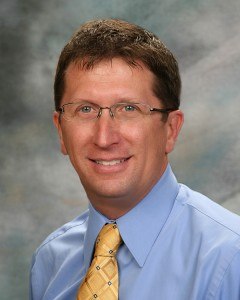When the National Hurricane Center’s new director was growing up on the Florida and Texas coasts, tropical storms frightened him. Decades later, Rick Knabb understands storms better, but he still doesn’t like them.

“I’m still very scared of hurricanes,” says Knabb, who left The Weather Channel to become chief of the U.S. government’s hurricane forecasting hub in Miami on June 1. “I have a very healthy respect for what they can do and I try to channel that fear into preparedness and action.”
As hurricane center director, Knabb will spend a lot of time urging coastal residents to prepare for a major hurricane by securing their homes. He will tell them to create evacuation plans and stock enough supplies to last several days without power.
He credits storm preparedness with giving him at least a little peace of mind during hurricanes.
In 1979, he watched Hurricane David take aim at his family’s home outside Miami. A few years later, after the family had moved to the Houston area, there was a terrifying night spent listening to Hurricane Alicia roar inland.
At the hurricane center in 2005, as Hurricane Wilma crossed South Florida, Knabb focused on his work as a senior hurricane specialist instead of agonizing over his family riding out the storm at home.
“You know why I wasn’t as scared as you might think? That’s because we had prepared ahead of time,” Knabb said.
Knabb, 43, replaces Bill Read, who retired after four years as director.
The childhood desire to understand hurricanes led to Knabb’s career in meteorology. He studied atmospheric science at Purdue University and earned a master’s and a doctorate in meteorology from Florida State.
He joined the hurricane center as a science and operations officer 11 years ago.
“There’s so many people that depend on what the National Hurricane Center does, and to play any kind of role in that is a tremendous honor, and I felt that the day I walked in the door in 2001,” Knabb said. “Now to be the director of the center, it’s an honor beyond description.”
Knabb initially worked on projects to streamline the computer models and other programs used for tropical weather forecasts, said Lixion Avila, a senior hurricane specialist at the center.
Avila encouraged Knabb to join the team of hurricane specialists, and he was a senior hurricane specialist from 2005 to 2008.
“He was very willing to learn. He has the skills in understanding the atmospheric processes and a very good way of delivering what he wants to say,” Avila said. “We had to learn how to put (forecasts) in words that most people will understand but at the same time with a level of science. He was able to get that very easily.”
Knabb expanded his communication skills at The Weather Channel, where he became its tropical weather expert in 2010 after two years as deputy director of NOAA’s Central Pacific Hurricane Center in Honolulu.
Though he gave interviews about tropical storm forecasts during his previous stint at the Miami hurricane center, Knabb said the experience of broadcasting and getting immediate feedback from viewers has made him excited about the opportunities the hurricane center has to interact through social media.
Knabb’s scientific expertise and his social and traditional media experience to get vital information to the public and emergency managers make him perfectly suited for the director’s job, said Bryan Norcross, hurricane specialist at The Weather Channel.
“From the beginning, he was always very interested in not just the meteorology but in how the information is communicated. I think that’s a key aspect of the job these days,” said Norcross, a former longtime Miami television forecaster who gained national praise for his calm coverage of Hurricane Andrew’s South Florida landfall in 1992.
The hurricane center already posts weather advisories and other storm-related information to Facebook and Twitter, which complement website and email alerts. Knabb plans to expand the center’s social media presence, particularly after the six-month Atlantic hurricane season ends Nov. 30.
Coastal residents should begin their preparations by filling prescriptions, stocking up on water and high-fiber snacks, and grabbing a couple books to read when the power is out, for example, Knabb said.
Two storms, Alberto and Beryl, formed in May before the official June 1 start of hurricane season, and forecasters said they expect seven to 13 more storms.
Was this article valuable?
Here are more articles you may enjoy.

 California Chiropractor Sentenced to 54 Years for $150M Workers’ Comp Scheme
California Chiropractor Sentenced to 54 Years for $150M Workers’ Comp Scheme  Viewpoint: The Impact of Behavioral Health on Workers’ Comp
Viewpoint: The Impact of Behavioral Health on Workers’ Comp  Harvard Study Again Stirs the Pot on Demotech Ratings of Florida Carriers
Harvard Study Again Stirs the Pot on Demotech Ratings of Florida Carriers  Supreme Court Allows More Transport Workers to Bypass Arbitration and Sue Employers
Supreme Court Allows More Transport Workers to Bypass Arbitration and Sue Employers 